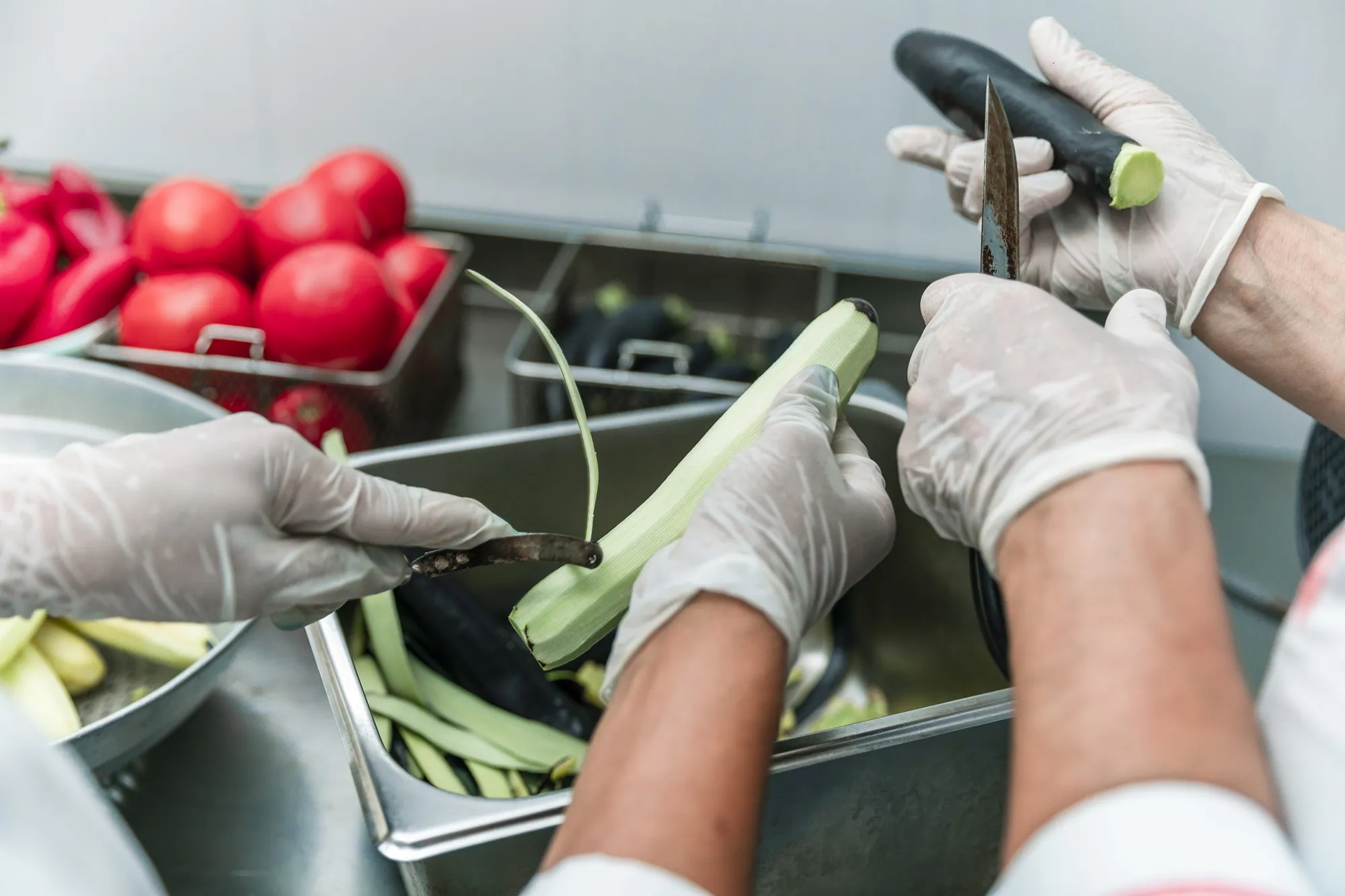Are you interested in Food Hygiene? Then this is the perfect course for you. Learn how to manage Food professionally!
450 Hours Duration
Completion Certificate
No Entry Requirements
Endorsed Courses
Get Your Course Now
Only 1 Day Left at this price
Discount 80% £660.00


Course Overview
Food Hygiene Course
Build the knowledge and skills needed to take your career to the next level, with this exclusive Level 5 Food Hygiene Course. Boost your CPD profile and enhance your CV, by earning your food safety supervisor certificate online.
The food and drink sector is one of the UK’s most prolific employers, with an extraordinary array of career opportunities to explore. The food and drink manufacturing sector in the UK employees around 440,000 people, with a total annual turnover in excess of £104 billion. Elsewhere, the UK’s hospitality and food service sector creates more than 3.2 million jobs, with an annual turnover of more than £130 billion. Much of the appeal in a career in the food sector lies in the limitless scope for advancement and guaranteed job security. It’s a dynamic and diverse a sector that welcomes candidates from all backgrounds, where fast-track internal promotion is the norm. Whether considering a career change or looking to take on your first leadership role, this Level 5 Food Hygiene and Safety Diploma comes highly recommended.
Over the course of 12 in-depth modules, this advanced Food Hygiene and Safety Diploma covers a broad range of important topics and knowledge areas. Whatever your role within the food sector, this course will arm you with the knowledge, skills and confidence needed to become a more capable and efficient worker. From business owners to entry-level members of the workforce, the teachings of this course are of universal value and relevance. Enjoy the freedom to study in your own time and at your own pace, with no deadlines or time restrictions involved.
Enrol online and get started today or contact our admissions team at CPD Courses anytime to learn more.
Who Should Take This Course
- Newcomers looking to build a career in the food industry with no prior experience
- Food business owners seeking to improve food safety standards in their operations
- Restaurant and catering staff aiming to meet legal food hygiene requirements
- Graduates interested in transitioning into food safety, quality assurance, or compliance roles
- Employees in the hospitality, retail, or manufacturing sectors who handle, store, or transport food
- Anyone looking to enhance their knowledge of food hygiene to gain a competitive edge and improve career prospects in the food sector
- Managers and supervisors responsible for implementing food safety procedures in the workplace
- Food manufacturers aiming to strengthen allergen management and labelling practices
- Health and safety officers looking to broaden their understanding of food safety regulations
- Professionals preparing for roles requiring formal certification in food hygiene and safety compliance
Course Syllabus
CPD Courses creates flexible and affordable distance learning opportunities for ambitious candidates worldwide. With no prior knowledge or experience necessary, this Level 5 Food Hygiene and Safety Program covers a variety of essential topics over the course of 12 self-paced modules:
Module 1 - Introduction to Food Safety
The importance of prioritising food safety in the workplace is discussed in the first module, which provides candidates with an overview of the fundamental principles of effective food safety. The potential consequences of substandard food safety policies are also examined, along with a brief overview of the recent history of food safety.
Module 2 - What is Food Hygiene
An introduction to the concept of the ‘chain of food poisoning’ follows in the second module, along with the steps that must be taken to break the chain and safeguard the consumer. The role of personal hygiene in ensuring good food safety standards is also discussed, along with an introduction to bacterial food contamination.
Module 3 - The 4Cs of Food Hygiene
The methodology known as the ‘4Cs’ approach to food hygiene is detailed and discussed in Module Three. Candidates consider the criticality of adequate cleaning, cooking, chilling and cross-contamination prevention practices at work, along with a series of guideline temperatures and cooking times to make food items safe to eat.
Module 4 – Microbiology
Module Four examines the basics of microbiology from a food safety prospective, focusing on the different types of microorganisms and the risks they pose to food products. The importance of proactively inhibiting bacteria and pathogen growth is discussed, along with the potential consequences of consuming spoiled or contaminated food.
Module 5 - Food Poisoning
A fascinating introduction to the causes and effects of food poisoning follows in Module Five, drawing distinctions between chemical food poisoning and bacterial food poisoning. Steps that can be taken to reduce the risk of all types of foodborne illness are discussed, along with the most common types and causes of food poisoning.
Module 6 - Pest Control
Workplace pest control is brought into discussion in the sixth module, which provides helpful guidelines for spotting the signs of an infestation. The importance of preventing infestation from occurring in the first place is discussed, along with how various types of pest infestations can pose a major threat to food hygiene and safety.
Module 7 - Food Allergy and Intolerance
Module Seven takes a look at common allergens, along with the extent to which any given product or ingredient has the potential to trigger an allergic reaction. The responsibility of the business to safeguard the consumer from allergic reactions is also discussed, with guidelines for preventing cross-contamination in the workplace.
Module 8 - Food Handling & Food Storage
A look at safe food handling and storage practices follows in Module Eight, which focuses on the temperature's food products must be chilled or heated to for safe consumption. The category of ‘potentially hazardous’ foods is also brought into discussion, including how to ensure they are heated, stored and handled safely.
Module 9 - Packaging and Labelling
Learners are then familiarised with the legal obligations of the food business to provide clear and concise information about their food products, ranging from ingredients to allergens to instructions for preparation. Helpful guidelines are also provided for including a nutritional declaration on the packaging of food products.
Module 10 - Allergen Labelling for Food Manufacturers
Module 10 takes a more in-depth look at the potential for allergens and cross-contamination to pose a risk to the safety of food products. An introduction to the main 14 allergens is provided, along with a series of good practice guidelines to ensure allergen information is clearly displayed in a variety of food service/retail settings.
Module 11 - Food Hygiene Rating Scheme
The purpose of the Food Hygiene Rating Scheme is discussed in Module 11, along with the logistics of the scheme and what its various ratings mean. Candidates also consider the criteria a food business must satisfy to achieve a high rating, along with the potential consequences of being handed a poor food hygiene rating.
Module 12 - Transporting Food Safely
A look at the safe transportation of food products concludes the course, highlighting the importance of preventing spoilage and minimising cross-contamination risk throughout the journey. Safe food holding temperatures are once again brought into discussion, along with how to choose the appropriate shipment method for any given product.
Career Path
This advanced Level 5 Food Safety and Hygiene Diploma could help you fast-track your progression in any segment of the food industry. Whether starting from scratch or looking to take your existing career a step further, you’lll find the help and support of CPD Courses invaluable. Typical job titles in the food sector include restaurant manager, team leader, executive chef, kitchen manager, catering manager, food production worker, human resource manager, logistics manager and many more besides. All with attractive salaries and limitless scope for further career advancement.
Endorsement
At the end of this course successful learners will receive a Certificate of Achievement from the Quality Licence Scheme and a Learner Unit Summary (which lists the components the learner has completed as part of the course).
This course and/or training programme has been endorsed by the Quality Licence Scheme for its high-quality, non-regulated provision and training programmes. This course and/or training programme is not regulated by Ofqual and is not an accredited qualification. Your training provider will be able to advise you on any further recognition, for example progression routes into further and/or higher education. For further information please visit the Learner FAQs on the Quality Licence Scheme website.
FAQs
What is the meaning of food hygiene and safety?
Food hygiene and safety refer to the practices and conditions that preserve the quality of food to prevent contamination and foodborne illnesses. It involves handling, preparing, and storing food in ways that reduce health risks.
What are the 5 basic food safety rules?
The five essential food safety rules include:
- Maintain cleanliness
- Separate raw and cooked foods
- Cook food thoroughly
- Keep food at safe temperatures
- Use safe water and raw materials
What is food safety?
Food safety is the scientific discipline describing the handling, preparation, and storage of food in ways that prevent foodborne illness. It ensures food is safe to eat from farm to fork.
What is hygiene and safety?
Hygiene refers to practices that promote health and cleanliness, while safety focuses on preventing accidents or harm. In the food industry, both are critical to preventing contamination and ensuring consumer well-being.
Why is food safety and hygiene important?
Proper food safety and hygiene prevent the spread of foodborne illnesses, protect public health, and ensure compliance with legal and regulatory standards, which is essential for consumer trust and business reputation.
Who should take the Diploma in Food Hygiene and Safety QLS Level 5?
This course is ideal for anyone working in or aspiring to enter the food industry, including food handlers, supervisors, business owners, or anyone responsible for food safety management.
Is previous experience in food safety required for this course?
No prior knowledge is needed. The course is designed to be accessible for beginners and also beneficial for professionals looking to refresh or advance their food safety knowledge.
How long will it take to complete the course?
The course is self-paced, meaning you can complete it on your own schedule. Most learners finish within 3 to 6 months, depending on personal availability.
What certification will I receive after completing the course?
Upon successful completion, you will receive a CPD-accredited certificate issued by OHSC, along with a Certificate of Completion from CPD Courses.
Does this course meet industry food safety standards?
Yes, the course content is aligned with current industry best practices and food safety legislation, ensuring that learners are equipped with practical and relevant knowledge.


Your Certificate, Delivered Instantly & Professionally
Finish your course and instantly download your PDF certificate to share or showcase. Prefer a hard copy? We’ll send you a beautifully printed version, ready to frame and display with pride!
Recognised CPD Certification
Earn a fully accredited CPD certificate that’s respected across industries.
Instant Download & Print
Download your certificate immediately after completing your course – perfect for your records or CV.
Printed Copy Included
You’ll also receive a professionally printed certificate delivered straight to your door – ideal for framing and display.

Verifiable Unique ID
Each certificate includes a unique ID number, easily verifiable by employers.
High-Quality Print
Enjoy a professionally printed certificate that looks impressive and feels premium.
Completion dates included
Your certificate clearly displays the completion date, making renewal planning simple.
What our Students say
Celebrating our Clients and Partners





























